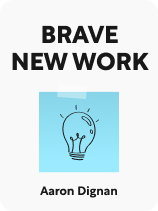

This article is an excerpt from the Shortform book guide to "Brave New Work" by Aaron Dignan. Shortform has the world's best summaries and analyses of books you should be reading.
Like this article? Sign up for a free trial here.
How do organizational problems happen? Why are traditional organizational structures failing?
Aaron Dignan’s book Brave New Work guides leaders through effective changes in organizations. He says that these changes are necessary because of certain organizational problems.
Keep reading to learn how to move past these problems and make your organization thrive.
Why Old Organizational Structures Are Failing
We’ll explain why traditional organizations (which Dignan calls “Legacy Organizations”) are ineffective in the modern world. Dignan defines traditional organizations loosely as those having a rigid hierarchical structure. They tend to have managers at the top who make decisions and monitor other peoples’ work, and other employees who carry out their instructions and have little or no authority.
Dignan identifies two traditional organizational problems today: Organizations are hindered by organizational debt (obsolete processes and structures that hinder an organization), and they undermine employees’ engagement at work.
Organizational Debt Creates Inefficiency
Organizational debt comes from processes that may have provided an important function at some point but no longer serve the organization.
For example, if an employee once spearheaded a project without permission, and it didn’t go well, a manager might have established a lengthy review process for approving new projects. This rule might have been intended to prevent a negative outcome in the future, but it ultimately discourages people from taking initiative, and it slows the organization’s progress toward its overall goal. Dignan also notes that organizational debt is in part a holdover from early 20th-century management styles that emphasized rigid and detailed rules to streamline manufacturing processes.
| A Different Take on Organizational Debt The term “organizational debt” was originally used by the entrepreneur Steve Blank, who defined it as the collection of changes that should have been made by an organization, but weren’t. The phrase was a twist on the term “technical debt” which describes the accumulated cost of taking shortcuts when developing a technology or digital product. In both cases, the debt comes from making a choice with a short-term gain and a long-term compounding cost, just like taking on financial debt. Based on this definition, organizational debt is even broader than Dignan describes and is often more like a shortcut. Most of Dignan’s examples include burdensome bureaucratic processes, but eliminating or failing to introduce a process for expediency also becomes organizational debt if it has a long-term negative impact on the organization. For example, if you fail to implement a thorough onboarding process for employees, you might save money and time in the short term by spending less time training employees, but in the long term they will take longer to get up to speed and become productive members of the team. |
Research confirms that workplaces with conventional management and structures (and thus organizational debt) are inefficient. Studies show that half of all manager roles are unnecessary, suggesting that organizations could increase productivity significantly by eliminating these roles altogether and finding new ways for workers to self-manage.
According to one study, workers in the US spend 16% of their working time on internal bureaucratic processes (things like paperwork and getting approval from higher-ups). (Shortform note: In addition to spending a significant proportion of their time dealing with red tape at work, Americans also spend enormous amounts of time navigating the bureaucracy of government social programs such as Medicaid, food stamps, and unemployment benefits. As a result, vulnerable individuals have to invest more time in lengthy application processes and often fail to get the benefits they are eligible for.)
Dignan argues that minimizing these requirements is an opportunity for organizations to reduce costs and boost profitability. He suggests that this strategy is more effective at increasing profitability than other common strategies such as laying off general staff, eliminating key functions of the organization, and acquisitions and mergers that most often fail to produce the intended boost in revenue for all companies involved.
People Are Less Engaged at Work
In addition to being inefficient and less productive, traditional organizations are also failing workers today because people are unhappy when they lack control over the best way to get their work done. Micromanaging leads to a lack of trust and makes people want to avoid work because they’re frustrated with having someone constantly monitoring them. On the other hand, Dignan believes that when companies give people the tools and freedom to pursue their goals, they’re intrinsically motivated to do so. This type of freedom leads to more efficient work and happier people.

———End of Preview———
Like what you just read? Read the rest of the world's best book summary and analysis of Aaron Dignan's "Brave New Work" at Shortform.
Here's what you'll find in our full Brave New Work summary:
- How organizations can adapt to the rapid pace of change in the modern world
- Why old organizational structures don't work anymore
- How to enable organizations to run themselves through decentralized work






